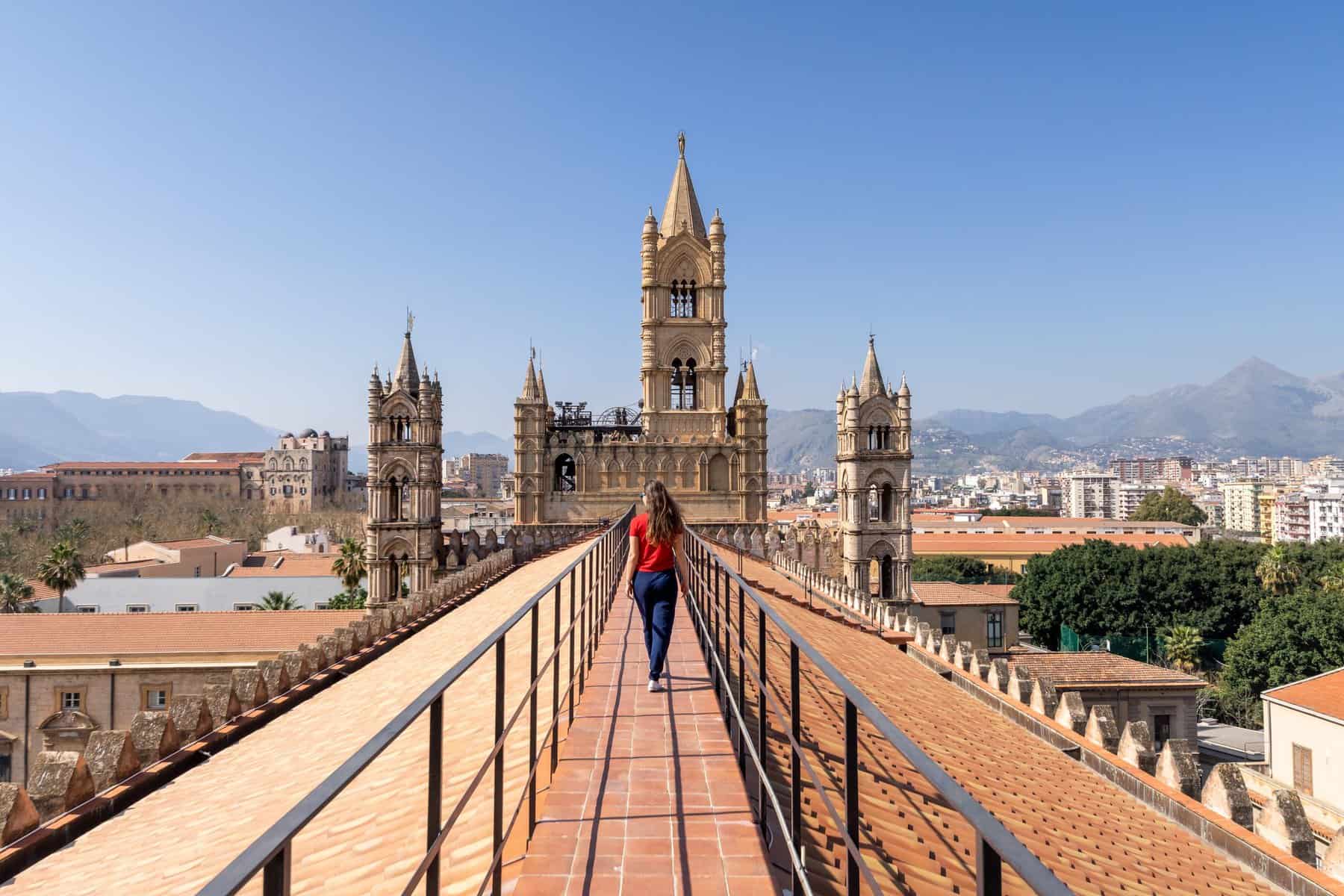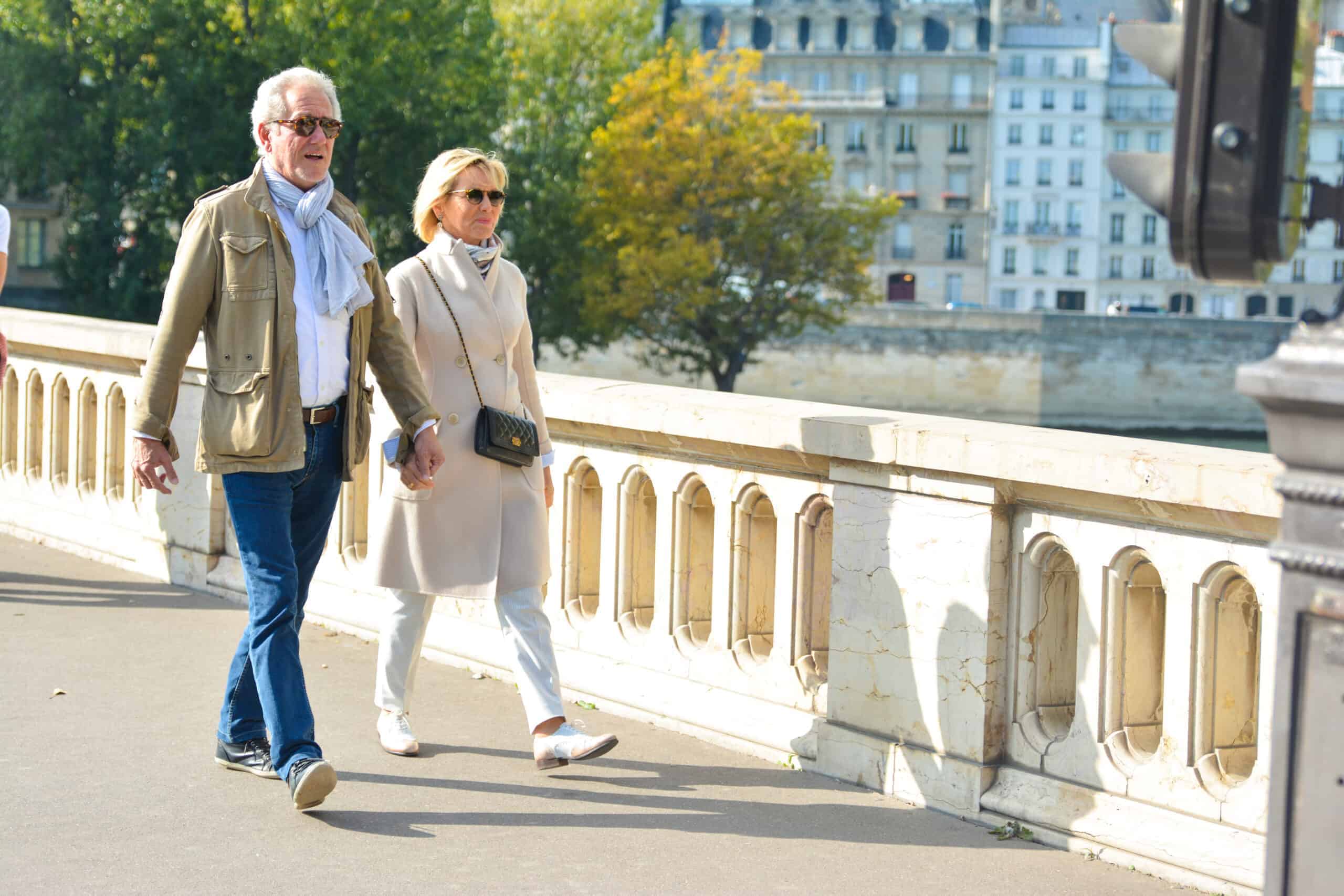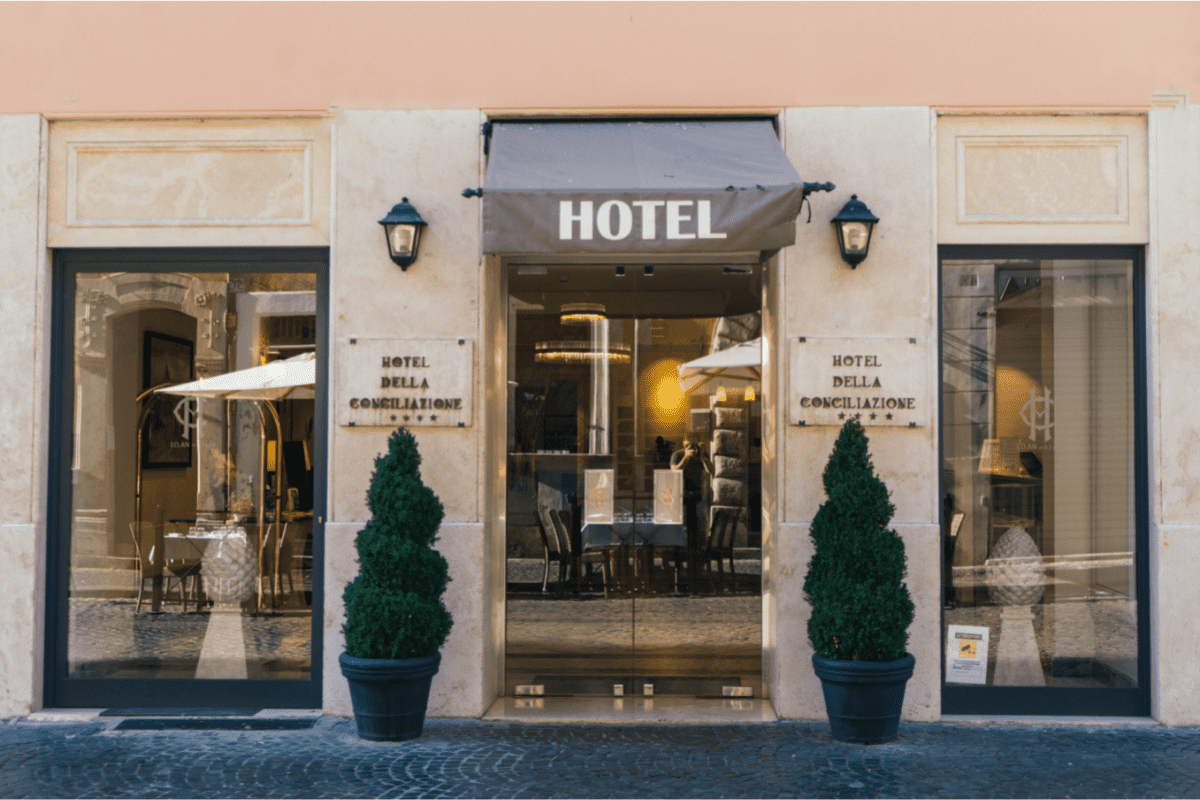Three-Day Sicily Itinerary: How to Spend a Long Weekend in Sicily.

By Franki Hanke
Is a three-day Sicily itinerary really enough time? Well, with so much history and food around, you could spend much longer traipsing up and down the coasts of Sicily, but three days are enough time for an enjoyable stay on this Italian island.
The main airports in Sicily, Italy are in north-western Palermo and eastern Catania, so your three-day itinerary in Sicily will differ depending on your home base for the trip.
Three-Day Itinerary in Sicily: Palermo
If you fly into the Palermo airport, it’s easiest to focus your stay on Palermo. This city is full of stunning architecture and historic UNESCO World Heritage sites. You’ll walk a lot to explore the skinny, pedestrian streets!
Day One

Start with the must-see sights of Palermo at Norman Palace (Palazzo dei Normanni), a 9th-century neoclassical palace. The palace now stands at the highest point of the ancient city center. Stop for breakfast between your lodging and the palace. There’s a plethora of cafes to choose from.
From there, continue towards the waterfront with Cattedrale di Palermo, the Palermo Cathedral.
From there, walk to Mercato di Ballarò, the open-air market which is open morning and afternoon (except for Sundays). If your lodging has a kitchen, this is a wonderful place to buy fresh fish or produce to keep your own Italian meal, but if not, find a snack or street food from these local vendors. If you had a late start, you may find selection waning. The market’s best earlier.
Next, walk to the Quattro Canti, Fontana Pretoria, and San Cataldo Chapel to see some baroque, Sicilian architecture in the historic center of Palermo. Built in 1154, the church features mosaic floors and three recognizably red domes.
If you’re limiting your walking, this is a great place to pause for a hotel nap before you pick up back in the evening. Stop by the waterfront for some gelato and a long sit with an ocean breeze.

If you’re hardy, add in a visit to the Teatro Massimo, a grand opera house. Take the guided tour inside to see more of the interior details. The Regional Archeological Museum is nearby too if you don’t take a longer tour at the opera house.
Finish the evening with dinner near your hotel. If you’d like to experience some of the late-night nightlife of Palermo, ask your hotel for a nearby bar in walking distance. In Old Town, try Via dei Chiavettieri.
Day Two
Choose a Day Trip
Especially if you have a rental car, spend some (or all) of your second day outside Palermo to see more of Sicily. You can reach different destinations depending on how far you want to drive.
Monreale – 30 Minutes
If you despise adding more travel time within your short window here, then spend just half an hour traveling to the neighboring town of Monreale. Here, you’ll see the Norman Cathedral. It features stunning gold mosaics.
Cefalù – One Hour
Cefalù is a beach town one hour from Palermo. If you’re traveling without a rental car, you can take a train between Palermo and Cefalù. The train will drop off conveniently close to the historic district. From there, visit the Rocca di Cefalù Castello ruins. Be warned, it’s a walk, but you’re rewarded with stunning views of the Mediterranean Sea. Re-fuel at one of the cafes near Piazza del Duomo before you visit the Duomo itself, which is a UNESCO World Heritage site. If you have time, add Mandralisca Museum or embrace the leisure of the beach.
If you’d rather simplify the concept of a day trip, schedule a half-day excursion with a guide who arranges transport and guides you to notable locations. Get Your Guide offers a six-hour tour from Palermo that visits Monreale to visit the Duomo, a 12th-century, medieval building. Then, you’ll drive the remaining way to Cefalù to see the Mandralisca Museum to explore the Greek and Arab history and influence here with a walking tour.

Segesta – One Hour
If the Greek ruins of Sicily speak to you, you’ll want to visit Segesta. One of the major cities of the Elymian people, Segesta is an unfinished temple.
Wonders of Sicily describes the history:
“In 414BC hostilities flared up between Segesta and Selinus (Selinunte). Since Segesta didn’t get any help from Akragas (Agrigento), they went to to Athens during the winter 416/415 to beg for help. Athens had for a long time had ambitions in Sicily, and now saw an opportunity to help their allies and even add new conquests to their empire. After a series of problems during the preparations, the fleet finally left for Sicily. The Athenian expedition in Sicily (415-413 BC) was a complete disaster for Greece. Later Segesta asked Carthage for help, leading to the total destruction of the city of Selinus (Selinunte) by the hands of Carthage. Segesta remained an ally of Carthage, it was besieged by Dionysius of Syracuse in 397 BC, and it was destroyed by Agathocles in 307 BC, but recovered.”
The ruins are well-preserved and worth a visit if this era of history is compelling. Get Your Guide offers a Segesta, Erice, and Salt Pans full-day excursion that departs from Palermo if you’d like someone to handle the transport for you.
Agrigento – Two Hours
See the Valley of the Temples. Founded in 581 BC by Greek colonists from Gela, it was once a great city You can see several well-maintained ruins including the Temple of Olympian Zeus, Temple of Heracles, and Temples of Concord and Hera. Then, see smaller artifacts from this archeological site at the National Archaeological Museum.
If you’re not gone all day long, finish your day with a meal back in Palermo.
Day Three
Leave the Kalsa neighborhood behind to visit Casa Florio, a 19th-century home that displays the ornate style of the past dynasty.
The opening hours are limited, so be sure you’ll be able to visit before arriving.
Then, trace your way backward with a visit to Parco Piersanti Mattarella, a city park designed in 1851 with an English style. It features oft-overlooked sculptures. Continue your strolling pace through the Ignazio Mormini Art Museum.
Get The Finer Life
Our Sunday email has tips and content you will love – exclusively for our subscribers.
"*" indicates required fields
Spend some time walking through the Politeama – Libertà neighborhood for shops and food. If you’re on the hunt for a souvenir before your three-day itinerary in Sicily ends, this is your moment!
If you’re tired and want something more laid back for your final day, have a beach day at Mondello. It has long beaches of fine sand just beside Palermo. It’s worth the small road trip to get there.
Three-Day Itinerary in Sicily: Catania
If you fly into Catania airport, you’ll be exploring more of the Eastern side of Sicily. Catania sits at the base of Mt. Etna, an active volcano that recently grounded flights in Sicily with ash. The volcano has several times damaged the city which resulted in several different waves of construction and architectural styles throughout the city.
Day One
Much like the Palermo itinerary, start your first day in Catania with the must-see sights of the city. Head to the Piazza Duomo, the main historic square of the city. The cathedral here was originally an 11th-century construction but was destroyed in 1693 when Mt. Etna erupted. The replacement structure incorporates Roman, Baroque structures including Roman baths beneath.
For lunch, walk to the fish market which is surrounded by seafood restaurants cooking seafood for you, but the historic market is a sightseeing must-do.
Spend the second half of the day in the ancient sites of Catania’s Roman roots. Teatro Romano was built on the prior site of a Greek theatre. It uses lava stones from Mount Etna. If you like opera, book a performance for this evening in Teatro Massimo Bellini.
Day Two
Choose a Day Trip
If you have a rental car, plan for a half-day or full-day tour to another location on the east coast.

Taormina – One Hour
It’s a popular place but for good reason. Only an hour from Catania, the town of Taormina is affectionately called the “pearl of the Mediterranean.” Taormina has changed “ownership” since its founding in 392 BCE so there are many influences throughout the city’s past.
To see this in action, visit Pallazzo Corvaja. The architecture blends Arab, Norman, and Gothic styles and now houses a museum too.
Then, you must visit the Teatro Greco (Greek Theater). It was built in the third century and enlarged for Roman theater later on. When the heat peaks, cool off with a granita from the famous Bam Bar or any spot that tickles your fancy while walking.
From there, catch the cable car to visit the beachside region of Taormina.
Siracusa/Syracuse – One Hour
Syracuse, or Siracusa, is a bit of Greek history in Sicily. It’s known for two main destinations: the island Ortigia and the archaeological site.
The small island of Ortigia is best enjoyed wandering. Its compact size means it’s easy to see everything by just walking through it all. Spot the Temple of Apollo, the oldest Doric temple in Sicily. It was one of the first Greek temples to use stone rather than wood.
The archaeological site features a Greek theatre with one of the largest audience spaces: enough for 15,000 spectators.
Modica – One and a Half Hours
Nearby other notable Sicilian towns Ragusa and Noto, Modica is only a bit further from Catania than Taormina. Modica is one of eight “Val di Noto” towns that were rebuilt after the 1693 earthquake. It’s been rebuilt to match the late Baroque art with preserved town layout. Modica is unique in that it was built within a valley spanning up the rocks. The town continues to be divided between Modica Alta (Upper) and Modica Bassa (Lower).

Start your day here on the main street, Corso Umberto. Don’t miss Palazzo De Leva or Teatro Garbaldi.
Modica is often called “the city of a hundred bells and a hundred churches,” so expect to see a few churches, but if you want to focus on one, pick San Nicolo Inferiore. It’s a 12th-century structure carved into the rock. It was undiscovered until 1987 as it was hidden behind more recent construction. It features painted frescoes depicting religious scenes.
Day Three
Visit the volcano! Arrange private transport or buy tickets for a guided tour, but no visit to Catania would be totally complete without seeing Mount Etna close up. There are public transportation buses that travel to and from Mt. Etna too, but do not miss the final bus back!
If you’re traveling independently, stop at one of the wineries on the drive back down towards Catania.
If you have afternoon time to spare back in Catania, visit Castello Ursino, a medieval castle that now holds a museum with additional medieval art and artifacts.
Sicily is a rich landscape of history, natural beauty, and food to explore. If you’re ever stuck between locations, just go with your gut. Wherever you explore from Trapani’s Isola Bella to the wineries of Messina, anywhere you go will be an enjoyable experience. Day-to-day, don’t be afraid of ignoring the itinerary and chasing down an interesting smell, it’s all part of the adventure.
For more travel tips, read our entire archive of travel content. If you’re itching to being your Sicilian vacation, watch some tv that features familiar landscapes from Get Excited for Your Sicily Trip with This TV. For more travel throughout Europe, follow our Instagram and TikTok to see where founder Paula is traveling now.
The above content may contain affiliate links. When you click and shop, we receive a small commission to support our writers.

Want a Free Guide?
You will receive our free 19-page guide and access to our exclusive content, private invitations, and tips you’ll love.
"*" indicates required fields
Facebook Group




